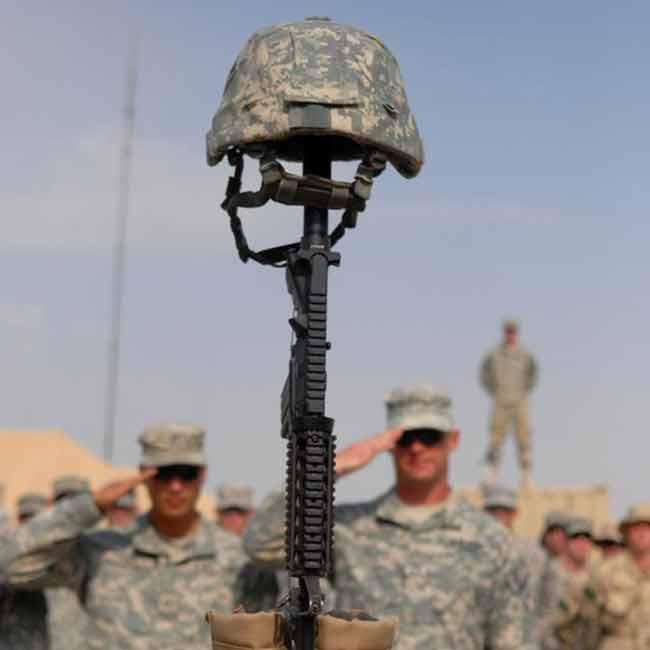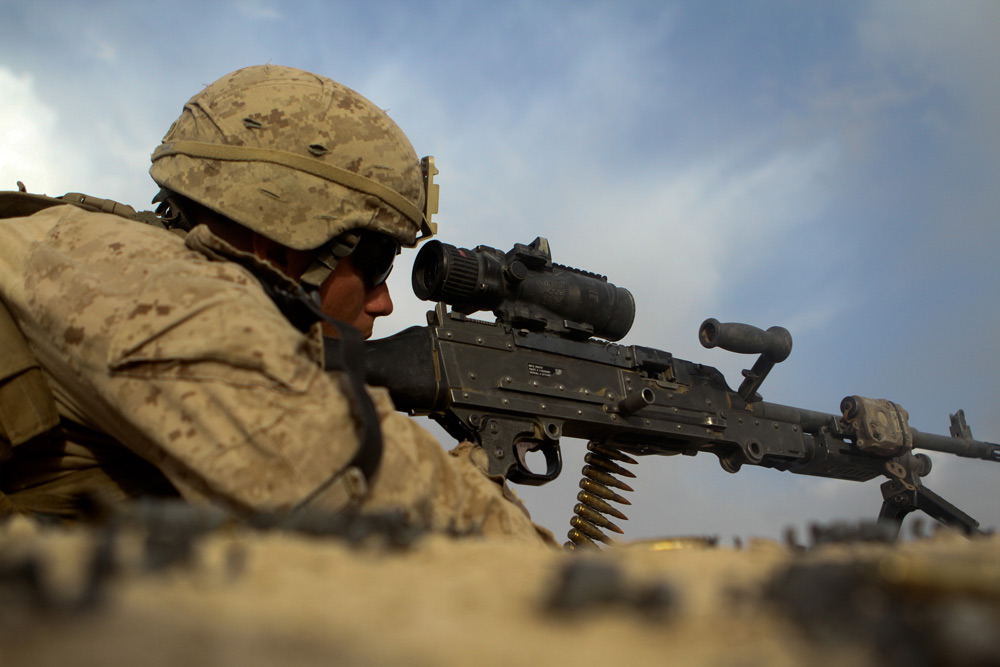Military Wants 'Minority Report' for Suicide Prevention

Suicides among U.S. troops have outpaced combat deaths in Afghanistan throughout much of this year. The alarming trend has spurred the U.S. military to envision a "Minority Report" future where it has better predictions of when a person is likely to commit suicide — or perhaps even murder.
The idea of predicting people's likelihood of using violence comes from the U.S. Defense Advanced Research Projects Agency (DARPA). The agency plans to hold a suicide prevention workshop on Oct. 19 to figure out the best methods and technological tools for identifying troubled states of mind, according to a special notice issued on Sept. 26.
"It seems to me that this is in response to the high incidence of suicidal behavior in veterans upon return from active duty," said Kent Kiehl, an associate professor of psychology and neuroscience at the University of New Mexico. "Or [it comes from] recent homicidal incidents where people go in and shoot everybody and then kill themselves."
That most recent special notice makes no mention of predicting murder. But an earlier special notice issued on Sept. 20 and later archived on Sept. 24 suggested grander ambitions for a "Predicting Suicide Intent" (PSI) program that would identify changes in a person's state of mind and predict future mental states related to both suicide and murder.
"The overall goal of PSI is to develop and evaluate predictive models for suicide assessment as a proof of concept, and extend it to the development of models that can predict other neurocognitive states of extreme order including homicidal intent," according to the Sept. 20 special notice.
Breaking down the problem
Experts already use psychological screening and neurocognitive tests to come up with risk assessments for whether imprisoned criminals are at low, medium or high risk of falling back on old behaviors, Kiehl said. But predicting an individual's likelihood of committing suicide or murder still represents a huge challenge.
Get the world’s most fascinating discoveries delivered straight to your inbox.
"Predicting something like murder is extremely difficult to do because the base rate is so small," Kiehl told TechNewsDaily. "If you study 100,000 people, three might go out and kill someone else. There's really not a good way to predict that single individual."
Similarly, suicides represent relatively rare events that make prediction tough, said Douglas Mossman, an M.D. and forensic psychologist at the University of Cincinnati. Much of Mossman's past work has highlighted the huge challenges of anticipating and preventing violence based on risk factors that are imperfect indicators of future violence. [Facebook Launches Suicide Prevention Tool for Military Families]
"Even in a high-risk population like a military population where they're concerned about the number of suicides and fatalities, it's still a statistically unusual event," Mossman explained.
Kiehl, an expert on psychopaths, pointed out that DARPA's futuristic model would have to account for the fact that suicide and homicide have very different risk factors. For instance, depression is a risk factor for suicide, but psychopaths who kill in cold blood rarely show signs of depression. Murders get even more complicated by themselves because of the many different motives of killers.
Besides "classical" suicide and murder, Kiehl also identified a third behavior related to spree killings where the murderers end the rampage by killing themselves. Different risk factors would likely apply to those three scenarios.
Costs of prediction
The roadblocks for predicting suicide and murder look huge. But psychologists do have plenty of tools that could help boost risk assessments based on the right deployment, Kiehl said. He suggested that he and his colleagues might end up getting involved with DARPA's plan, if the military agency shows interest in their work.
Kiehl envisions using a combination of tools to screen people and sort out those at high risk for suicidal or homicidal behavior. The U.S. Army might take a first step by applying a questionnaire or interview for all soldiers at several stages: boot camp, deployment and return from deployment.
The initial screening could sort out potential high-risk individuals for a second screening step that used neurocognitive computer tests or games to examine each person's state of mind. A third step for screening the highest-risk individuals could use electroencephalography (EEG) to measure electrical brain waves, or use brain imaging such as functional magnetic resonance imaging (fMRI) scanners. [Quiz: Sci-Fi vs. Real Technology]
Such psychological screening might ideally apply to everyone all the time for the best chance of noticing and preventing suicides or murders, Kiehl said. But he added that both the financial cost and the intrusion on personal privacy or freedom make it so that the U.S. military must find a balanced middle ground.
For instance, predictions might improve if psychologists could track incidents in people's lives related to divorces, financial problems or unstable homes. Whether or not the U.S. military and society at large are willing to pay that price remains to be seen.
"If you give up a bit of individual freedom, you can prevent many mental health problems," Kiehl said.
Making it real
The technology already exists to improve risk assessments for suicide or murder, but it could get better. Kiehl envisioned an EEG system embedded in soldiers' helmets that could collect mental data by measuring brain wave patterns, or perhaps a wearable EEG cap for sleeping soldiers to identify troubled sleep patterns that could tip off psychologists as related warning signs.
"If DARPA is interested in a tricorder that zaps you and tells you whether you'll commit suicide, then, no — we're not there yet," Kiehl said.
Mental health professionals have largely moved away from "yes or no" visions of predicting violence and instead favor risk assessment of a person's broader health issues and risk factors, Mossman said. Successful treatment of risk factors such as psychosis or substance abuse may have the side benefit of reducing an individual's likelihood to use violence.
But even if DARPA's prediction goal doesn't get realized, Mossman said that the research could still improve understanding of events that put people at higher risk of suicide. A focus on broader mental health could also prove more beneficial to everyone, regardless of whether or not he or she would ever commit suicide.
"When we have that information, we can go ahead and do clinical interventions that may be beneficial to people who may harm themselves, but also to people who wouldn't have harmed themselves but are suffering in other ways," Mossman said.
This story was provided by TechNewsDaily, a sister site to LiveScience. You can follow TechNewsDaily Senior Writer Jeremy Hsu on Twitter @jeremyhsu. Follow TechNewsDaily on Twitter @TechNewsDaily, or on Facebook.





